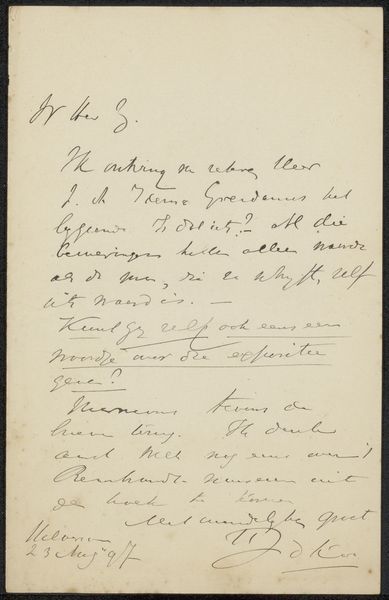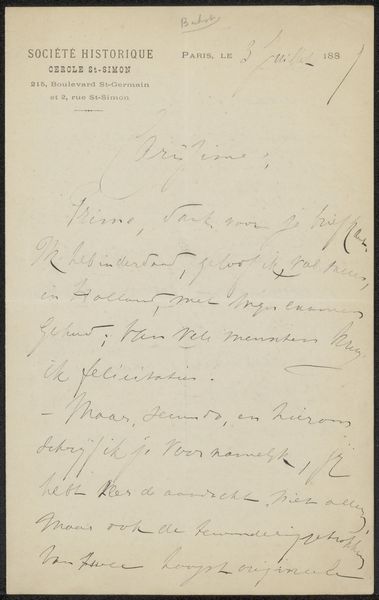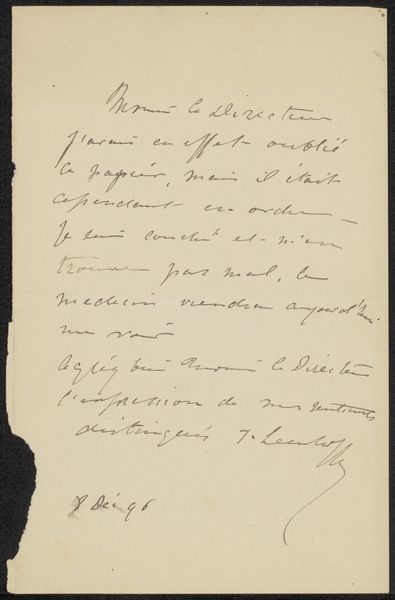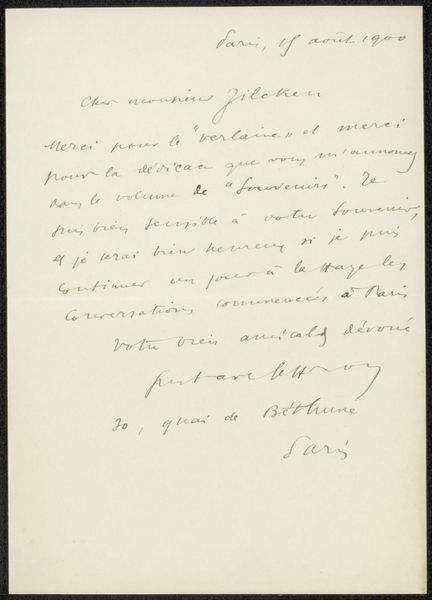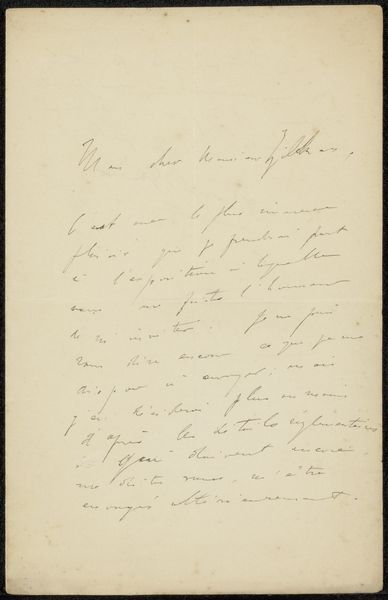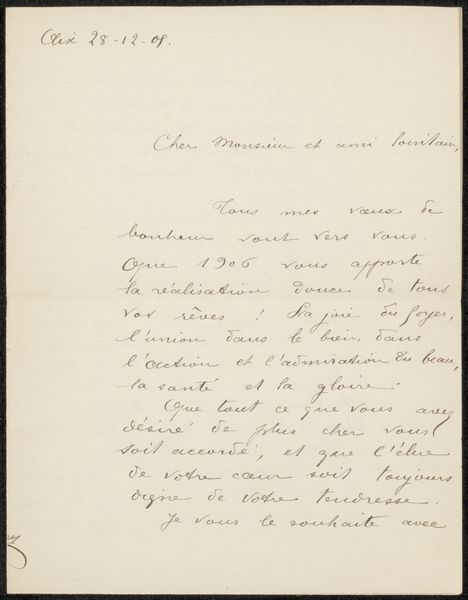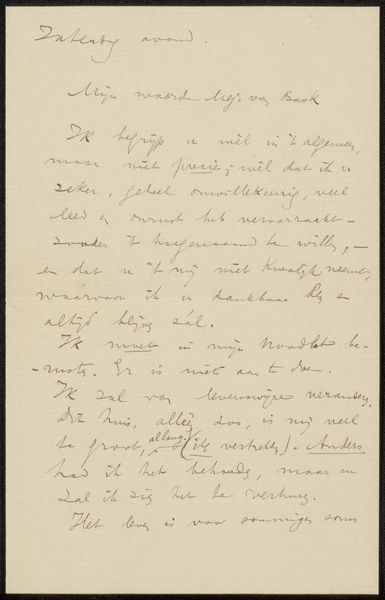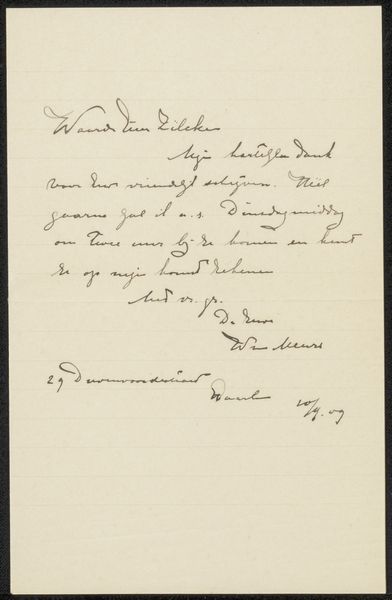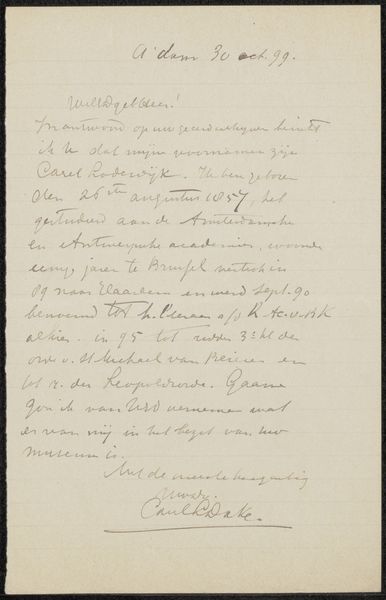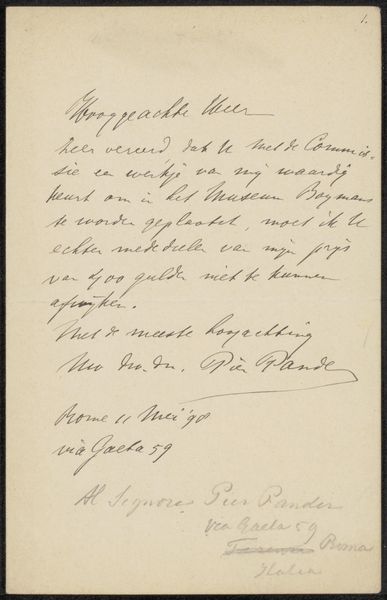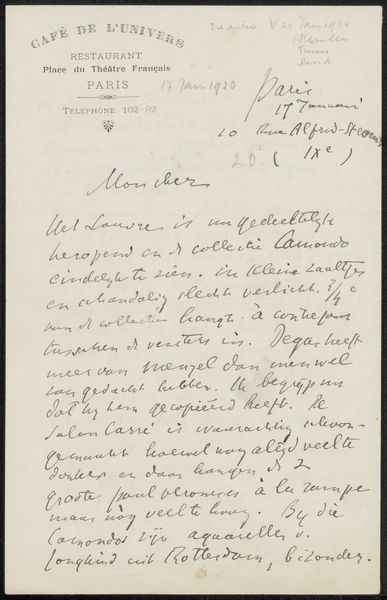
drawing, paper, photography, ink
#
drawing
#
paper
#
photography
#
ink
#
history-painting
#
calligraphy
Copyright: Rijks Museum: Open Domain
Curator: This intriguing piece from the Rijksmuseum collection is titled "Brief aan Philip Zilcken," possibly dating to 1886 and attributed to Adriaan Pit. It's a drawing, seemingly a photographic reproduction, rendered in ink on paper. Editor: Immediately, I’m drawn to the flow of the handwriting. It feels intimate, personal, like a glimpse into a private moment. The paper looks like it’s aged beautifully; you can almost feel its texture. Curator: The content itself seems to hold symbolic weight; you get the immediate feeling that it's not merely about conveying immediate news, but rooted in a broader historical and cultural exchange. The heading shows it originates from the Société Historique in Paris. Editor: Precisely. I wonder about the ink used. The varying pressure in the strokes suggests perhaps a quill, creating subtle contrasts and textures within the lines themselves. I want to know where it was made, by whom. What would the manufacture of ink mean at this date in time? Curator: As for Zilcken, he was also immersed in the artistic circles of that period. Therefore, we can assume this letter potentially bears information pertaining to artistic and cultural endeavors that shaped society back then. This makes it into an artifact in addition to the simple function of delivering a letter. Editor: So the materiality – the paper, the ink, the act of handwriting – becomes part of a network. It's a tangible link to a specific moment and set of relationships. Who was the paper mill worker, the ink maker? What kind of social world did their labor enable? Curator: The photographic reproduction complicates things. Is it a facsimile for wider circulation, diluting the aura of the original, or does it democratize access to Pit's correspondence? Its value in the original depends very much on if you can touch and hold the item. Editor: It really makes you consider how easily we’re accustomed to a culture of mass media nowadays, but if this was meant to circulate via photography back then, then perhaps that makes it very much ahead of its time, which speaks more profoundly of the artist's role. Curator: That brings us back to thinking of art as cultural heritage, not only regarding paintings but even more prosaic everyday artefacts that can, given time, speak eloquently for forgotten, yet valuable histories. Editor: Absolutely. It shifts our focus from simply what’s *represented* in art to the complex ways art objects are produced, circulated, and imbued with meaning across time. The true context then would be the history of reproduction.
Comments
No comments
Be the first to comment and join the conversation on the ultimate creative platform.
